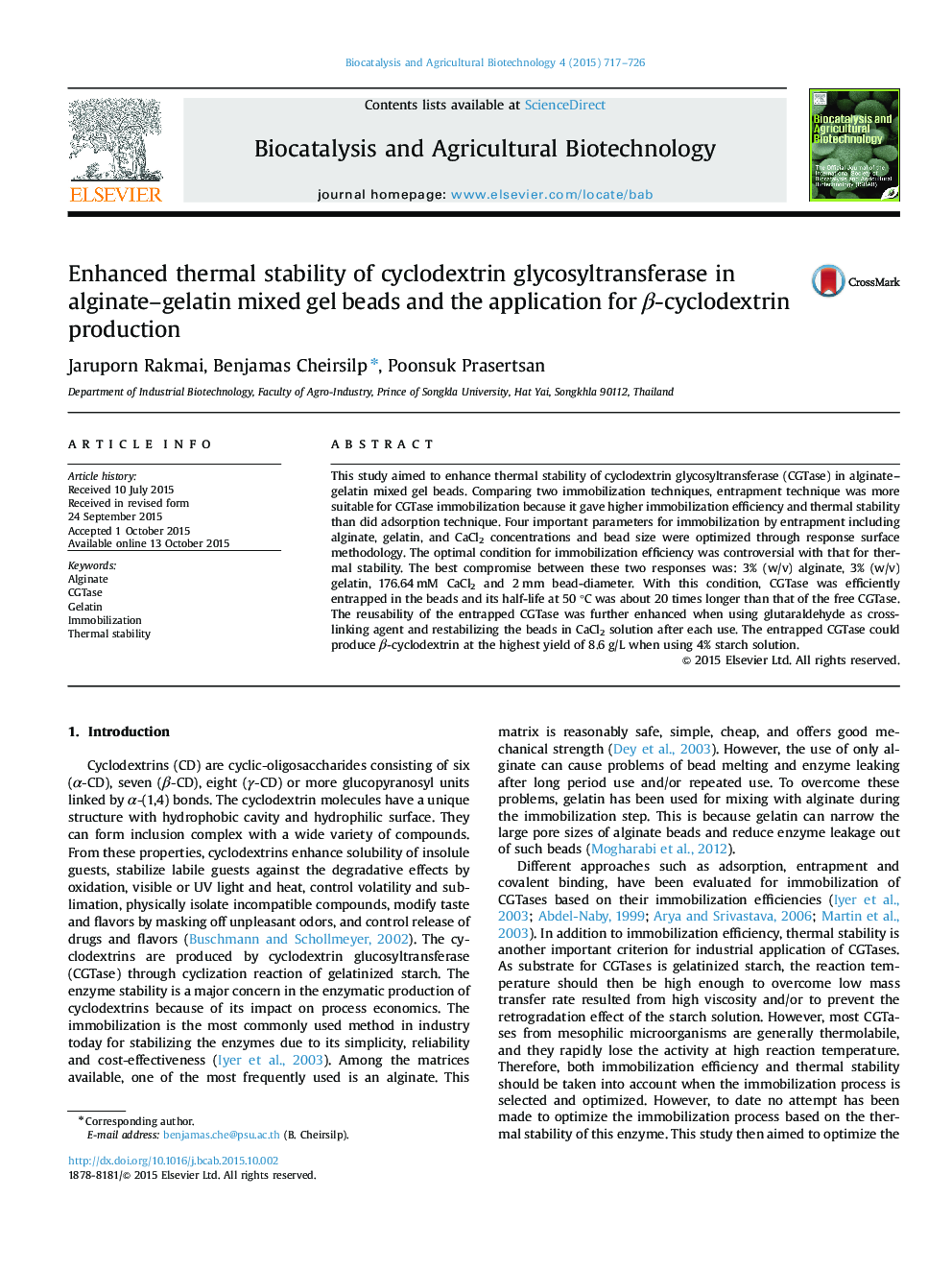| Article ID | Journal | Published Year | Pages | File Type |
|---|---|---|---|---|
| 2075329 | Biocatalysis and Agricultural Biotechnology | 2015 | 10 Pages |
This study aimed to enhance thermal stability of cyclodextrin glycosyltransferase (CGTase) in alginate–gelatin mixed gel beads. Comparing two immobilization techniques, entrapment technique was more suitable for CGTase immobilization because it gave higher immobilization efficiency and thermal stability than did adsorption technique. Four important parameters for immobilization by entrapment including alginate, gelatin, and CaCl2 concentrations and bead size were optimized through response surface methodology. The optimal condition for immobilization efficiency was controversial with that for thermal stability. The best compromise between these two responses was: 3% (w/v) alginate, 3% (w/v) gelatin, 176.64 mM CaCl2 and 2 mm bead-diameter. With this condition, CGTase was efficiently entrapped in the beads and its half-life at 50 °C was about 20 times longer than that of the free CGTase. The reusability of the entrapped CGTase was further enhanced when using glutaraldehyde as cross-linking agent and restabilizing the beads in CaCl2 solution after each use. The entrapped CGTase could produce β-cyclodextrin at the highest yield of 8.6 g/L when using 4% starch solution.
